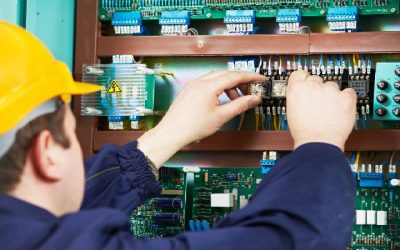Humidity is often used as terminology dealing with the weather, it’s the level of water in the air or environment. Humidity also effects machinery and many other manufacturing processes. Controlling and monitoring humidity in equipment is vitally important in a variety of industrial and domestic uses. A humidity sensor is used to measure moisture levels to determine the amount of water vapor present in a mixture of gas or pure gas environments like nitrogen or argon. The warmer the air temperature, the more moisture it can hold. Humidity sensors are also known as “hygrometers.” Leonardo da Vinci built the first rudimentary hygrometer in the 1400s. The earlier hygrometers were created to determine weather patterns.
Humidity Sensor Types
There are different types of humidity sensors depending upon the industry in which they are used.
Relative Humidity Sensor
There is a “relative” humidity sensor that operates testing electrical capacity, which is the ability of two closely connected conductors to create an electrical field between them. Basic sensors are made up of two metal plates with a non-conductive polymer film between them. This film collects the moisture from the air, which causes the voltage between the two plates to convert into digital readings.
Dew Point Sensor
A dew point sensor has a thin film that is capacitance based, which stores calibration data, all of which lead to the development of a dew point measuring system used in industrial HVAC and weather applications.
Resistive Humidity Sensor
The third type of humidity sensor is the “resistive” humidity sensors that measure the change in electrical connections. A resistive sensor operates by wire-wound electrodes in a plastic or glass cylinder and a substrate that is coated with a salt or conductive polymer.
Thermal Conductivity Humidity Sensor
Lastly, there is a “thermal conductivity” humidity sensor, which measures the precise humidity difference between the thermal conductivity of dry air and air containing water vapor.
Humidity Sensor Benefits
Humidity sensors are used widely in various environments, such as medical products, textile production, food and beverage production, HVAC systems, motor vehicles, respirators, museums, storage facilities, oceanography, air conditioners, and so much more. If the humidity is too high in many instances, it creates mold, fungus, or various bacteria growths, which can cause a great deal of damage and a high cost to repair its effects. Humidity sensors are purposefully designed to improve equipment performance, to reduce energy usage, and to increase safety. In environments, where temperature affects performance and the operation of equipment, humidity compensation is a major consideration. Modern sensors are designed to detect temperature, force, pressure, humidity, flow, power, and a lot more. They are created to output voltage, current (0- or 4-mA to 20-mA-FS output), analog signals, or digital signals, depending on the type of sensor, such as the autonomous model or a power source.
Top Quality Humidity Sensors
To receive the right humidity sensor for your industry contact Gopher Electronics Company who specializes in electronic sensors for the medical, industrial, and transportation fields. Gopher Electronics iCompany s a stocking distributor of electro-mechanical components and value-added sub-assemblies. Gopher Electronics Company offers sensors from Honeywell, Gems and HSI Sensing. They also provide options to detect essential variables such as pressure, proximity, humidity, magnetism, and temperature.








